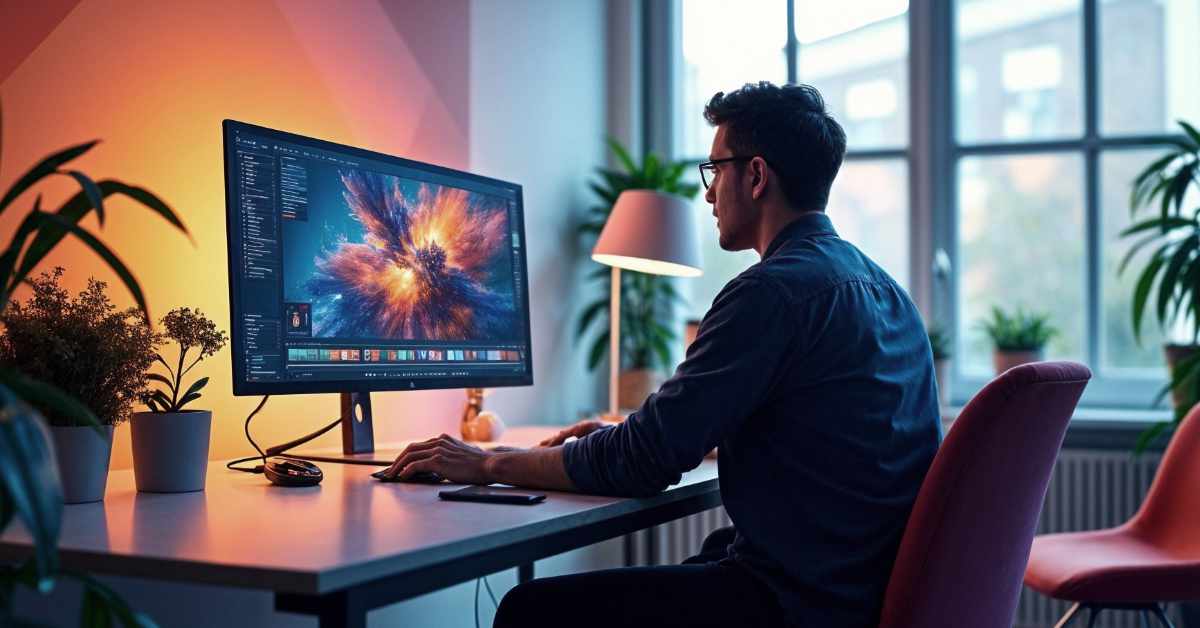Image Composite vs. Collage: Understanding the Difference and Digital Compositing Tips

When working with mixed media, digital art, or photography, it’s important to understand the distinction between an image composite and a collage. While they may seem similar at first glance, the way elements are arranged and blended in each is fundamentally different.
Image Composite vs. Collage
An image composite seamlessly blends multiple visual elements into a single, cohesive image. The goal is to make the different pieces appear as if they naturally belong together, creating a realistic or surreal final composition. Think of a fantasy scene where a person is riding a giant butterfly, or a futuristic city skyline made from various architectural elements. A well-crafted composite looks like a single photograph rather than a collection of different images.
On the other hand, a collage is a more fragmented and expressive approach to image-making. Instead of blending elements together seamlessly, a collage showcases multiple images, textures, and materials arranged together. A collage can be as simple as a photo montage with overlapping images or as complex as a mixed-media artwork incorporating paint, fabric, and typography.
Both techniques are widely used in digital and traditional art, but if you’re looking to create a visually cohesive scene, mastering digital compositing is key.
Digital Compositing Tips
Creating a successful image composite requires more than just layering images—it involves careful planning, attention to detail, and an understanding of visual harmony. Here are some essential tips to help you get started:
1. Define Your Concept
Before you begin, decide what kind of image you want to create. Is it a portrait, a landscape, or a surreal fantasy scene? Having a clear vision will help you choose the right images and elements for your composite.
2. Choose a Strong Focal Point
Every great composition has a focal point—an area that draws the viewer’s eye. Use the rule of thirds to position the main subject in a visually appealing way. This method divides the frame into a 3×3 grid, and placing your focal point along these lines creates a balanced and professional look.
3. Pay Attention to Perspective
Perspective plays a huge role in making a composite look believable. Objects that are meant to appear closer to the viewer should be larger, while those farther away should be smaller. If perspective is inconsistent, the scene will feel unnatural and disjointed.
4. Keep Proportions Realistic
Even in fantasy or surreal composites, proportion is important. A person sitting on a couch should not look like a giant compared to the furniture (unless that’s what you’re going for). All elements in the scene should maintain realistic size relationships.
5. Match Lighting and Shadows
Lighting direction and shadows are crucial in making a composite look cohesive. Ensure that all elements are lit from the same direction as the background. If one part of your image has light coming from the left and another from the right, the scene will feel unnatural.
- Observe how light interacts with different objects.
- Add painted shadows and highlights to enhance depth.
- Use a Gaussian blur to soften harsh edges and integrate elements more naturally.
- Experiment with blend modes in Photoshop or other digital tools to merge shadows and highlights seamlessly.
6. Adjust Colour Temperature for Consistency
Colour temperature affects the mood and realism of a composite. Adjust the white balance of all elements so they look like they belong in the same environment. For example:
- A daytime outdoor scene should have consistent cool or warm tones across all elements.
- If your scene includes a light source, like a campfire, objects near it should have a warm glow, while those further away should remain cooler.
Many editing programs offer colour correction tools, including Hue/Saturation, Colour Balance, and Selective Colour Adjustments, to help achieve a unified look.
Making Your Composite Stand Out
Mastering digital compositing takes time and practice, but by focusing on perspective, proportion, lighting, and colour harmony, you can create stunning, realistic, or surreal images. If your goal is to blend elements into a seamless world, these principles will help your work feel more polished and professional.
Are you working on an image composite or collage right now? Let me know in the comments—I’d love to hear about your creative process!






0 Comments